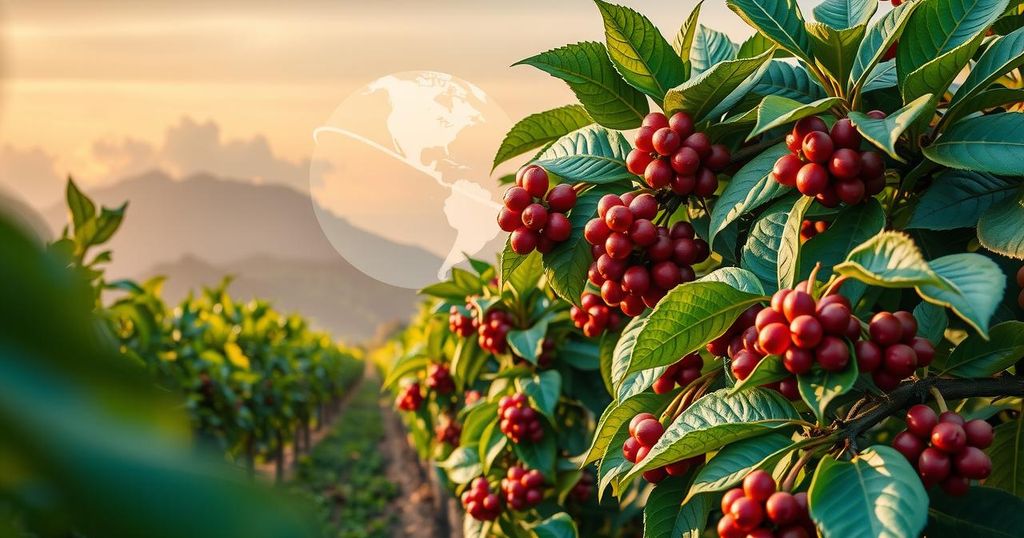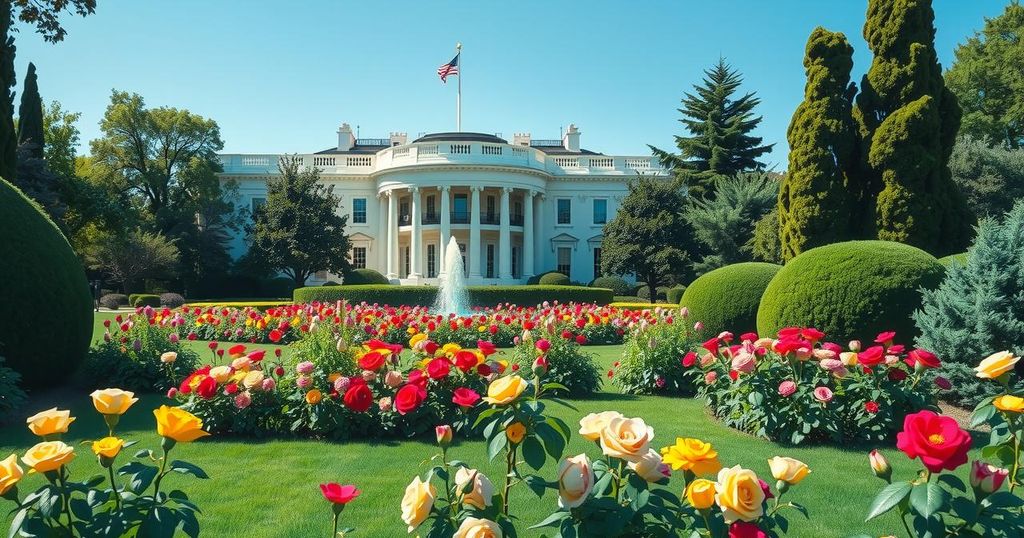Coffee prices have soared due to climate change and market dynamics, with arabica prices hitting $3.48 per pound. Experts anticipate continued volatility due to production challenges and demand fluctuations, particularly as new markets emerge in China. The struggle for small farmers remains a pressing issue amid the dominance of multinational processors, highlighting the need for sustainable practices and support programs.
Global phenomena such as climate change, political challenges, and fluctuating market dynamics have caused coffee prices to reach unprecedented heights, impacting the cost of everyday beverages. Although the current surge may stabilize in the coming months, experts predict that volatility will persist, greatly complicating visibility for producers, many of whom cultivate less than one hectare of land.
Last year, arabica bean prices in New York surged by 90%, setting a new record of $3.48 per pound. Robusta beans, while generally lower quality, also experienced significant price increases. Concerns surrounding drought-damaged yields in Brazil and Vietnam, the two largest coffee producers, have further escalated the price rise, compounded by a consistent excess of demand over supply.
Carlos Mera, a coffee analyst at Rabobank, noted the compounded effects of shipping disruptions due to the closure of the Red Sea, which has forced traders to reroute deliveries via Africa, resulting in delays. Additionally, the anticipated EU legislation against importing products contributing to deforestation has created uncertainty, although enforcement has been postponed until December 30. Mera indicated a likelihood of price decreases despite ongoing market volatility.
The agricultural vulnerability of arabica beans, which thrive at higher altitudes, highlights the impact of climate change; few regions have the capacity to adjust farming locations upward as global temperatures rise. Conversely, robusta beans endure varying growing conditions but are less favored by consumers. The US Department of Agriculture projects a production of approximately 175 million bags in the 2024-2025 growing season, comprising both bean types.
Climate change poses new risks like late frosts and pest infestations, particularly evident this year in Brazil and Vietnam. Coffee production, traditionally dominated by several countries, now increasingly looks toward new regions such as Togo and Ivory Coast for potential cultivation opportunities. It is crucial that farming practices adapt for sustainable coffee growth, emphasizing canopy protection and multi-crop farming.
Consumer demand for coffee is expanding beyond traditional markets, with significant growth seen in China. Mera indicated that China imported 4.3 million bags in the 2023-2024 season, a notable increase from previous years. However, European demand has decreased due to economic pressures, affecting sales in countries like Germany, where demand fell by 1% last year.
Despite increased coffee prices, many small-scale farmers remain trapped in poverty due to the dominance of multinational processors in this global commodity market. Programs intended to provide fair trade opportunities cover only a small fraction of the market. Experts emphasize the urgency of stabilizing prices, as drastic drops could precipitate farmers abandoning their crops, affecting future production.
In response to these challenges, the Group of 7 nations has initiated a Global Coffee Sustainability and Resilience Fund to stimulate private investments aimed at improving productivity and increasing financial returns for coffee growers. Addressing climate change and market challenges will be essential for ensuring the viability of coffee farming and the livelihoods of the millions involved.
The article discusses the factors contributing to rising coffee prices, including climate change, political issues, and market dynamics. The impacts of these changes affect growers, particularly small-scale farmers in developing countries, and consumer prices for coffee products. The piece highlights production statistics, the shift in global coffee demand, and the challenges faced by agricultural communities, while advocating for sustainability efforts and fair trade practices. It also illustrates the changing landscape of coffee consumption, especially in growing markets like China.
In conclusion, the surge in coffee prices is attributed to a mixture of climate-related challenges, geopolitical instability, and shifting consumer demands. While prices may moderate, market volatility is expected to continue, posing significant concerns for coffee producers, especially small-scale farmers. Sustainable practices and fair trade initiatives are increasingly vital to ensure producer viability and market stability moving forward.
Original Source: www.taipeitimes.com




